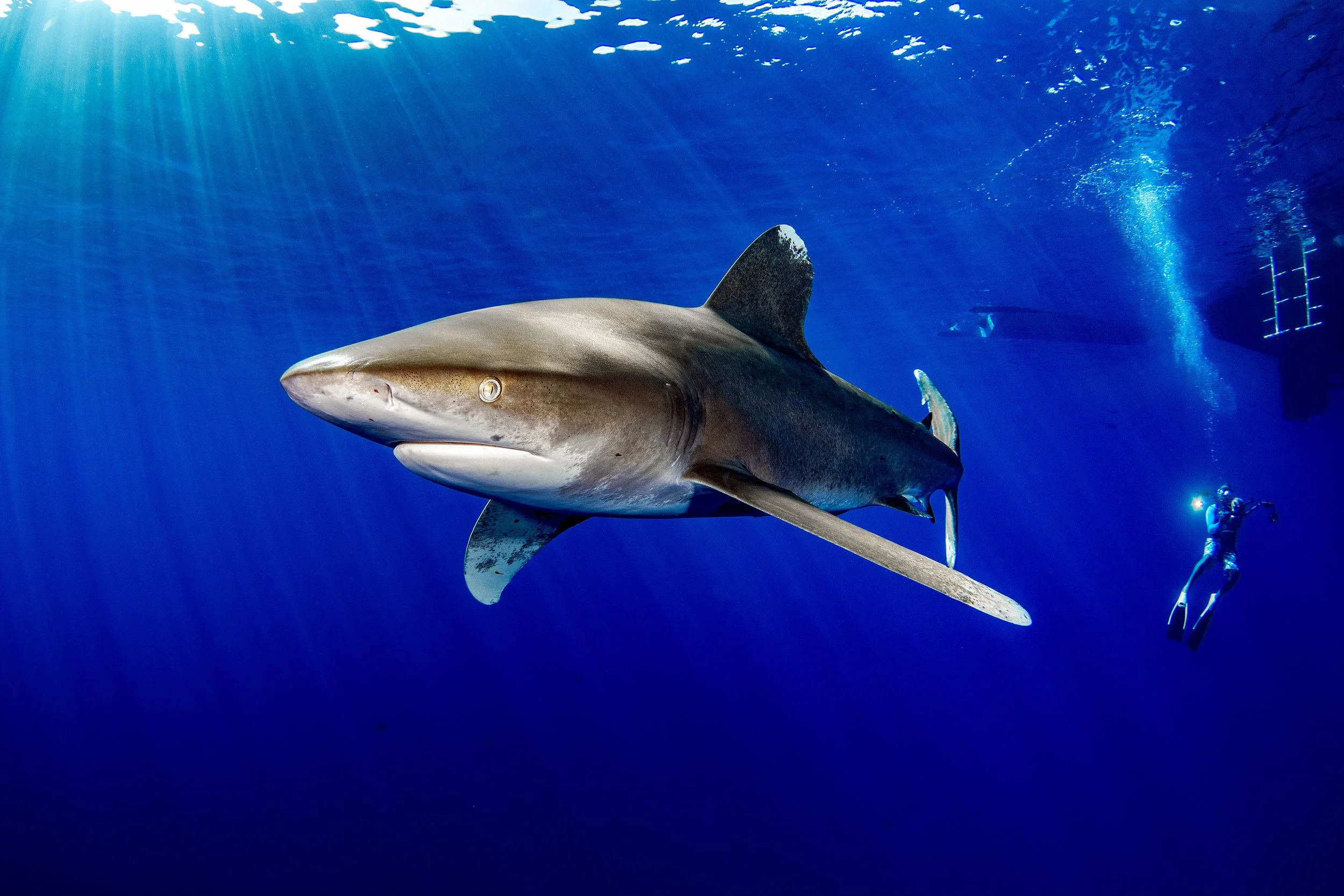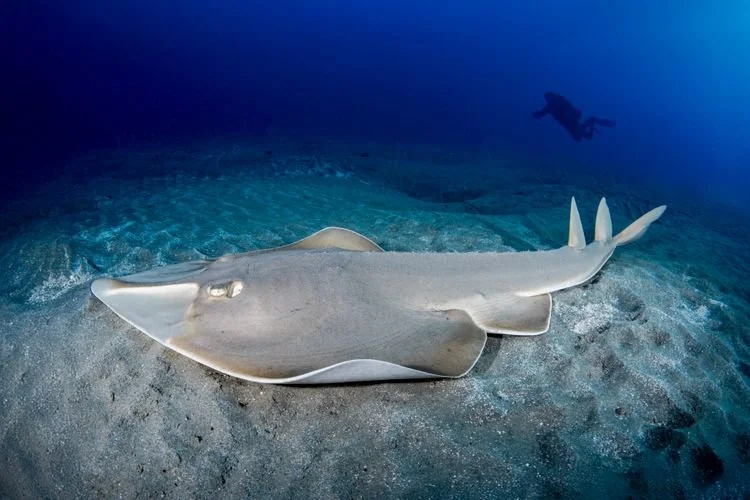Banner photo by Shawn Heinrichs
Protecting Sharks and Rays at CITES CoP20:
A Global Call to Action
At the 20th meeting of the Conference of the Parties (CoP20) to CITES, governments face a defining opportunity to protect some of the ocean’s most threatened species—sharks and rays. While CoP19 marked historic progress by bringing over 90% of the global shark fin trade under regulation, many species continue to decline due to ongoing trade, enforcement gaps, and ecological vulnerability.
The proposals on the table for CoP20 aim to close loopholes, elevate protections, and bring unregulated trade under long-overdue international control.
More than 37% of shark and ray species are threatened with extinction, with this rate nearly doubling for those found in international trade.
New research shows that illegal trade now exceeds legal volumes for several species, undermining the impact of CITES listings.
Photo by Shawn Heinrichs
The time to act is now - Oceanic whitetip sharks, for instance, are listed on CITES Appendix II but have declined by more than 90% and are still found in large volumes in the Hong Kong SAR fin trade, where genetic testing shows that over 95% of those fins are unreported and likely illegal. Deep-sea species like gulper sharks-targeted for their high-value liver oil- have suffered declines exceeding 80%, all while remaining completely outside the scope of CITES regulation.
Proposals at a Glance
Seven proposals covering over 70 species have been submitted for consideration at CoP20. These proposals clearly meet the criteria in Resolution Conf. 9.24, and their implementation is straightforward with training and ID tools available. Species-specific and family-level visual identification guides, genetic testing protocols, and customs training materials are already in use across regions and will be updated to reflect newly listed taxa. Several Parties have piloted these tools successfully under previous shark and ray listings, demonstrating that implementation is both feasible and scalable with coordinated support.
Additional resources, including updated FAO-GLOBEFISH guidance and trader-targeted outreach materials, are under development to further assist Parties in fulfilling CITES obligations from the moment listings enter into force.
Adopting these proposals would close loopholes, align CITES with CMS and RFMO protections, and give these species a fighting chance to survive.
3 Appendix I Listings:
Oceanic whitetip shark, Manta and mobula rays, Whale shark
Prohibiting international commercial trade in species that have suffered severe population declines and continue to be traded illegally despite existing protections.
Photo by Reneta Romeo
2 Zero Export Quotas under Appendix II:
Wedgefishes,
Giant guitarfish
These families are now recognized as the most threatened of all sharks and rays. Despite a 2019 Appendix II listing, their high-value fins continue to appear in trade at volumes far exceeding reported levels. A zero quota would provide a critical stopgap to halt unsustainable trade and allow populations to recover.
Photo by Reneta Romeo
2 Appendix II listings:
Gulper sharks,
Smoothhound sharks
Gulper sharks are deep-sea species targeted for squalene, a high-value liver oil used in cosmetics and pharmaceuticals. Despite population declines exceeding 80%, this trade remains completely unregulated. Smoothhound sharks are widely fished for their meat and traded under vague or misapplied names, making monitoring nearly impossible. A genus-wide listing for smoothhounds and a family-level listing for gulpers would close major enforcement gaps, bring long-overdue oversight to these trades, and support sustainable management for overexploited species.
Photo by Andy Murch
The champion Governments leading these listings include (in alphabetical order):







